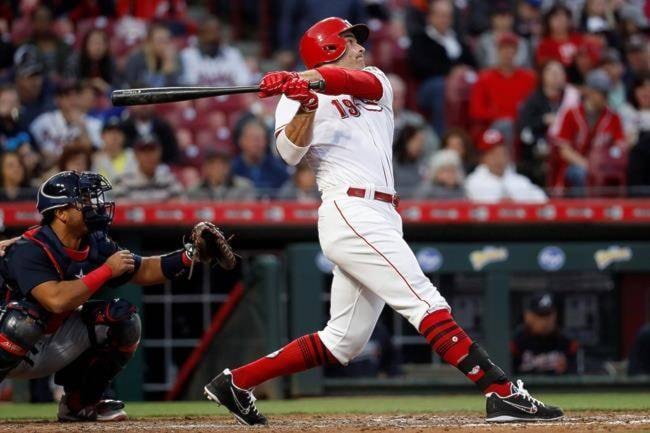Canada produces more Major League Baseball players who bat left compared to any other country, a new study from Canadian researchers indicates.
The finding lends some credence to the theory that those exposed to ice hockey early in their lives are more likely to be left-handed batters, says the study published this week in the journal PLOS One.
John Cairney, the lead author and a kinesiology and physical education professor at the University of Toronto, said the B��Ԫ������ַ�hockey influence on batting hypothesisB��Ԫ������ַ� has been around a long time, discussed on sports talk shows and in the sports pages.
B��Ԫ������ַ�People will say we know this already, but we didnB��Ԫ������ַ�t because no one has done the analysis,B��Ԫ������ַ� Cairney said.
B��Ԫ������ַ�We have by far and away more left-handed batters than any other country.B��Ԫ������ַ�
Nine of 13 Canadian players in Major League Baseball batted left in the 2016 season, the study says, or about 69 per cent.
Only about 37 per cent of Americans in the big leagues bat left, while 33 per cent of Asian-born players and 30 per cent of Dominican Republic-born players are left batters. If including all baseball players in 2016, only about 25 per cent bat left, the study found.
Joey Votto, the big-hitting left-handed slugger from Toronto who plays with the Cincinatti Reds, is the poster child for the analysis, Cairney said.
A left-handed batter is thought to be at an advantage because they are close to first base, increasing the likelihood of making it there before a throw can be made, the study said, noting other benefits existed as well.
B��Ԫ������ַ�While there are many possible explanations, the fact remains, batting left confers a statistical advantage,B��Ԫ������ַ� it said.
Researchers examined all big league ball players from 1917 B��Ԫ������ַ� the year when the National Hockey League began and when hockey had really taken root across Canada B��Ԫ������ַ� to 2016, Cairney said.
There were 154 Canadian-born players in the majors since 1917, and 53 per cent of those players batted from the left side, Cairney said.
B��Ԫ������ַ�Over time, Canadians who bat left are about double that of the league average,B��Ԫ������ַ� he said. B��Ԫ������ַ�This may be due to the fact that they grew up playing hockey before they picked up a baseball bat.B��Ԫ������ַ�
The hockey influence hypothesis is consistent with action theory, Cairney said, which says that the development of a skill in one sport affects development in another.
The fact that most Canadian left-batting ball players are right-handed throwers, showing right-hand dominance, also gives more credence to the effect of hockey on baseball hitting styles, the study suggests.
Shooting one way in hockey has similar hand placements in baseball. For example, hockey players who shoot left have their right hand at the end of the stick. Left-hitting ball players have their right hand at the end of the bat.
The study also dove into data on U.S. states where hockey was popular, such as Minnesota, Michigan and the northeastern states, compared to the Midwest and southern states, where hockey participation is lower. There they found a higher proportion of baseball players who hit left in the hockey-playing states, although the differences werenB��Ԫ������ַ�t statistically significant.
B��Ԫ������ַ�ItB��Ԫ������ַ�s just a trend in the United States, but worth exploring further,B��Ԫ������ַ� Cairney said.
The study is the first stage of testing the hockey influence on batting hypothesis to show there is a difference between Canadian ball players and the rest of the world, Cairney said. The next step is to figure out if the players did, in fact, play hockey as children.
The latest research included all players, including pitchers and switch hitters as left-handed batters. But even when switch hitters were excluded, Canadians still batted left more than those from all other countries.
B��Ԫ������ַ�If the hypothesis of being born in a country where hockey is popular, does that increase likelihood that youB��Ԫ������ַ�re going to be a left-handed batter?B��Ԫ������ַ� Cairney said. B��Ԫ������ַ�The answer is yes.B��Ԫ������ַ�
Liam Casey, The Canadian Press
Like us on and follow us on .



